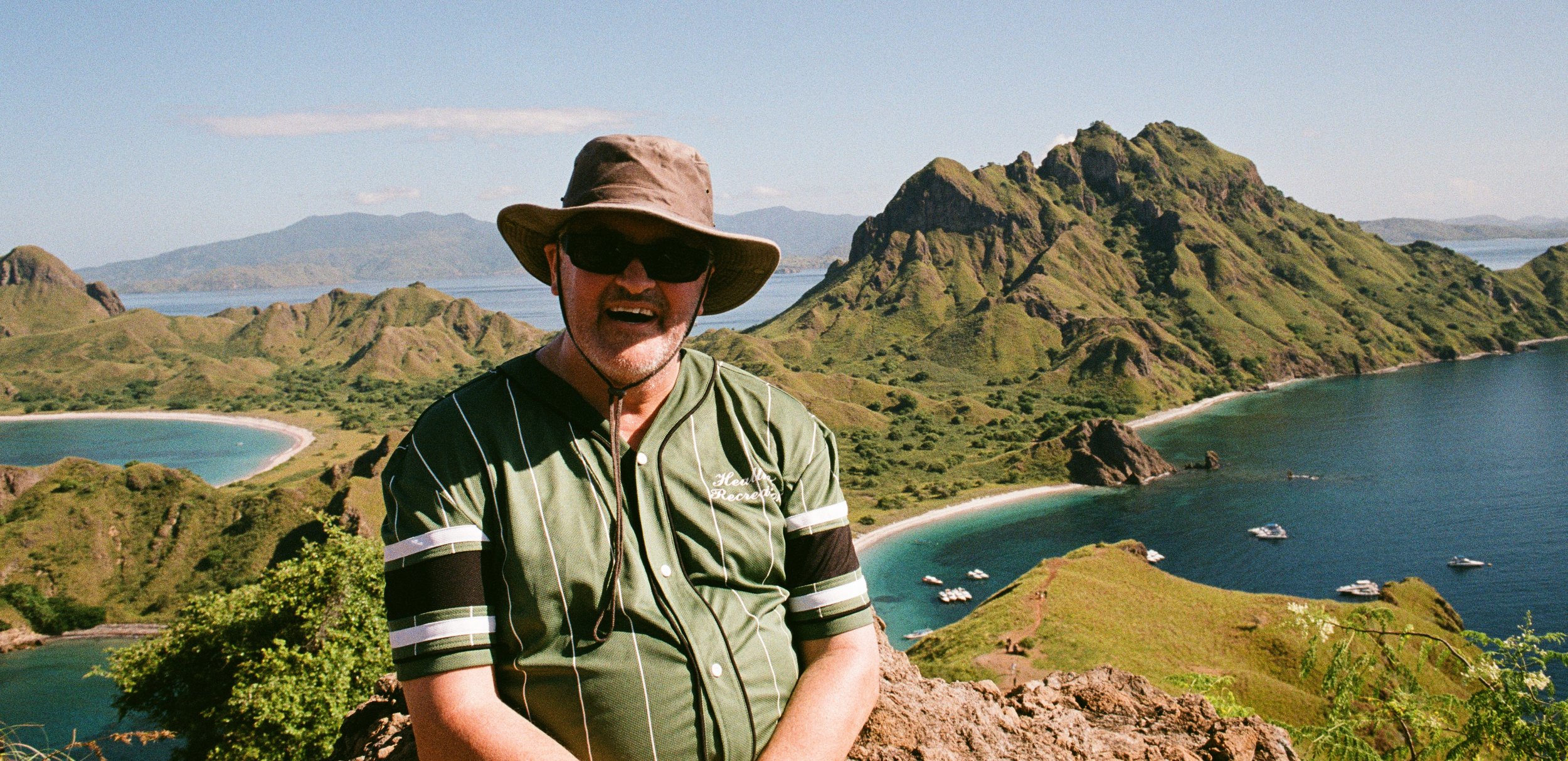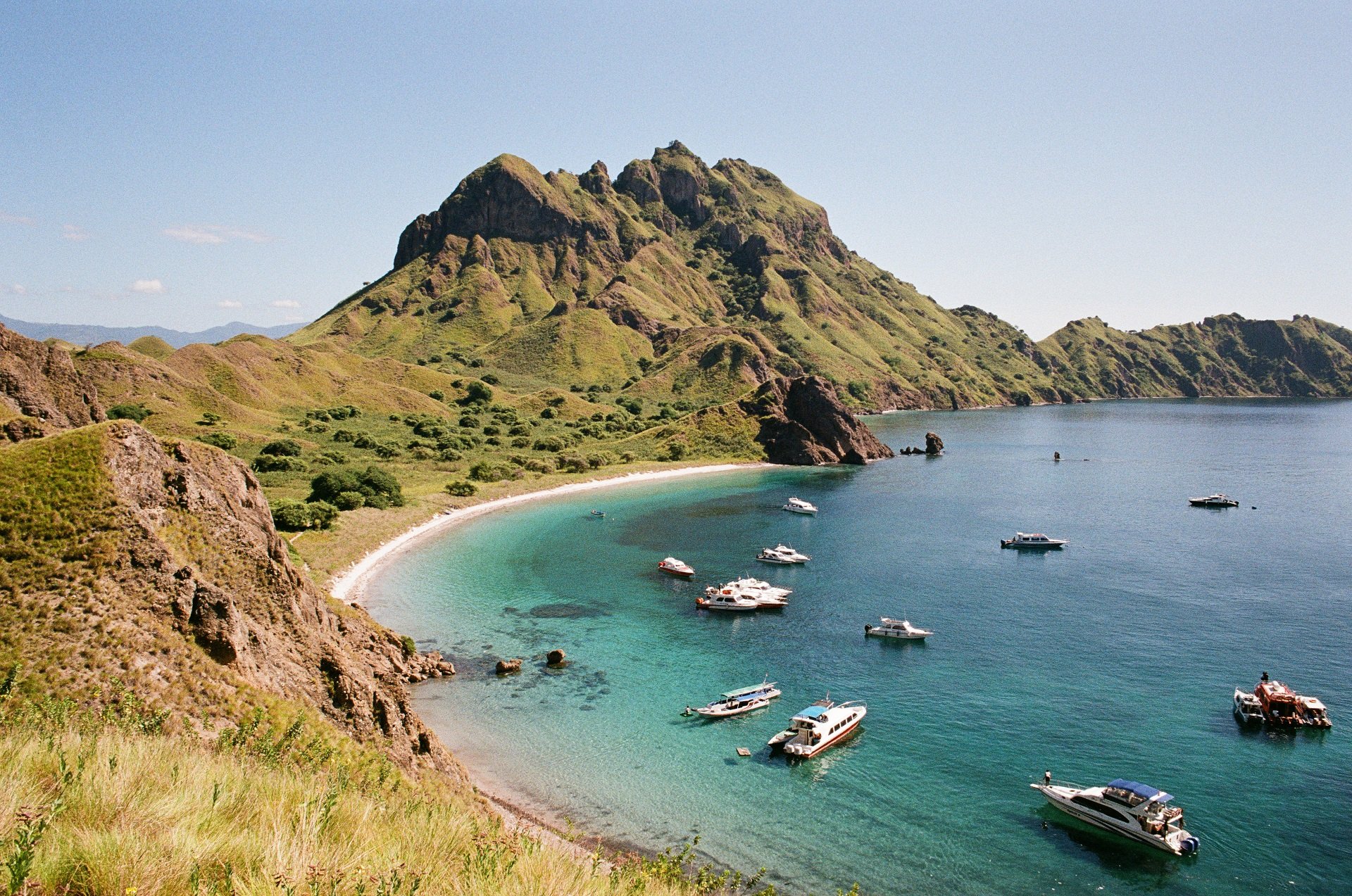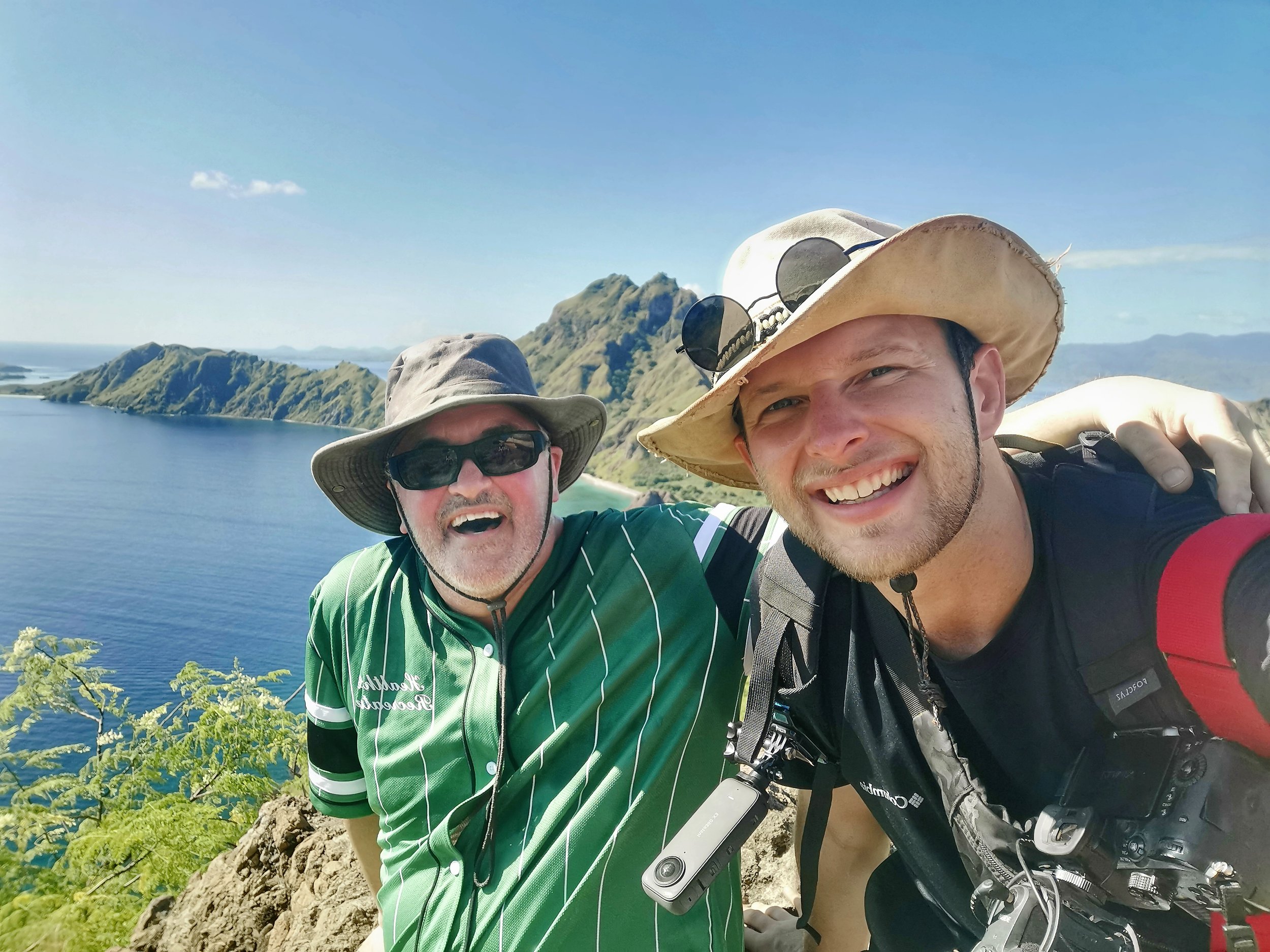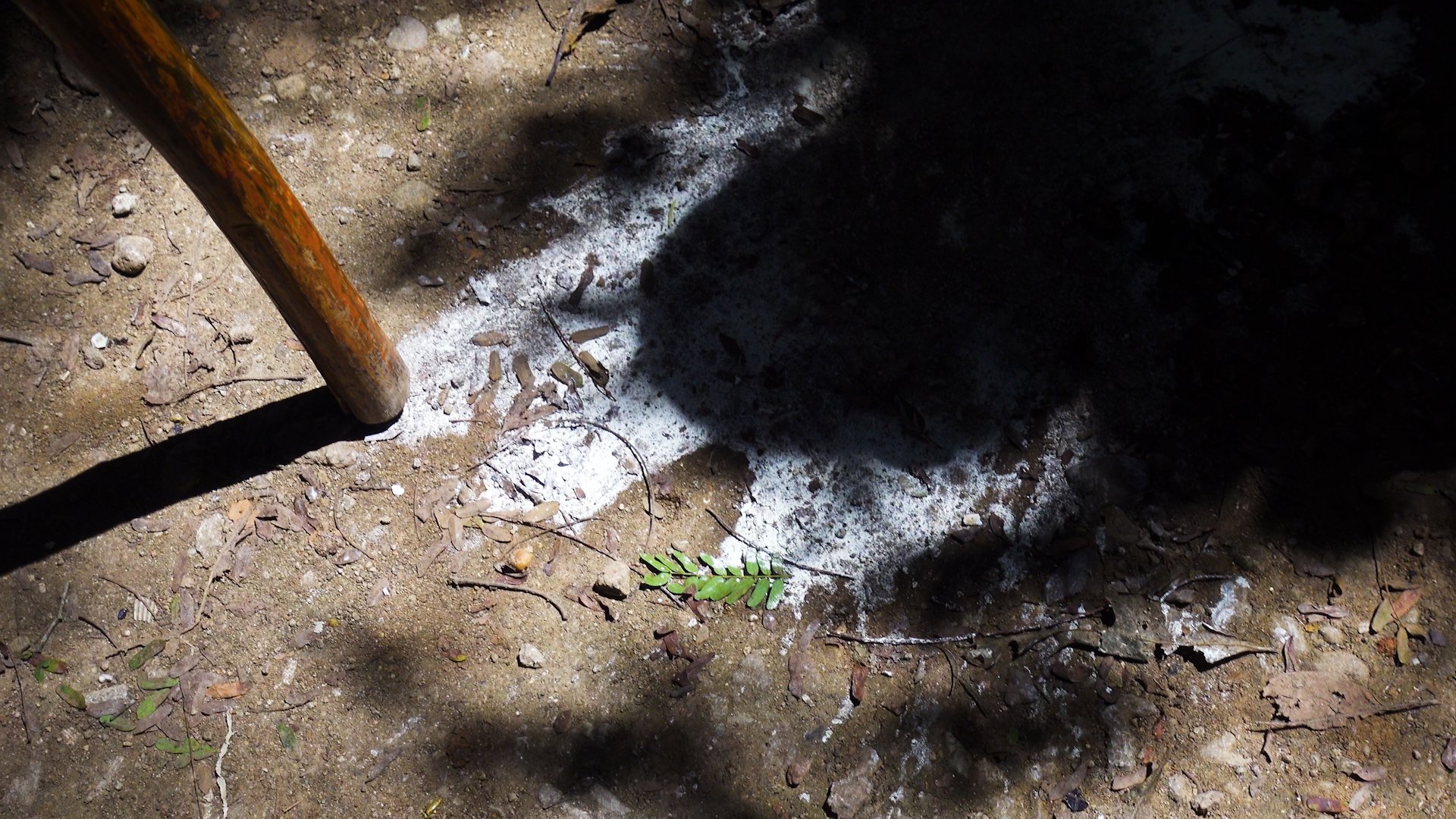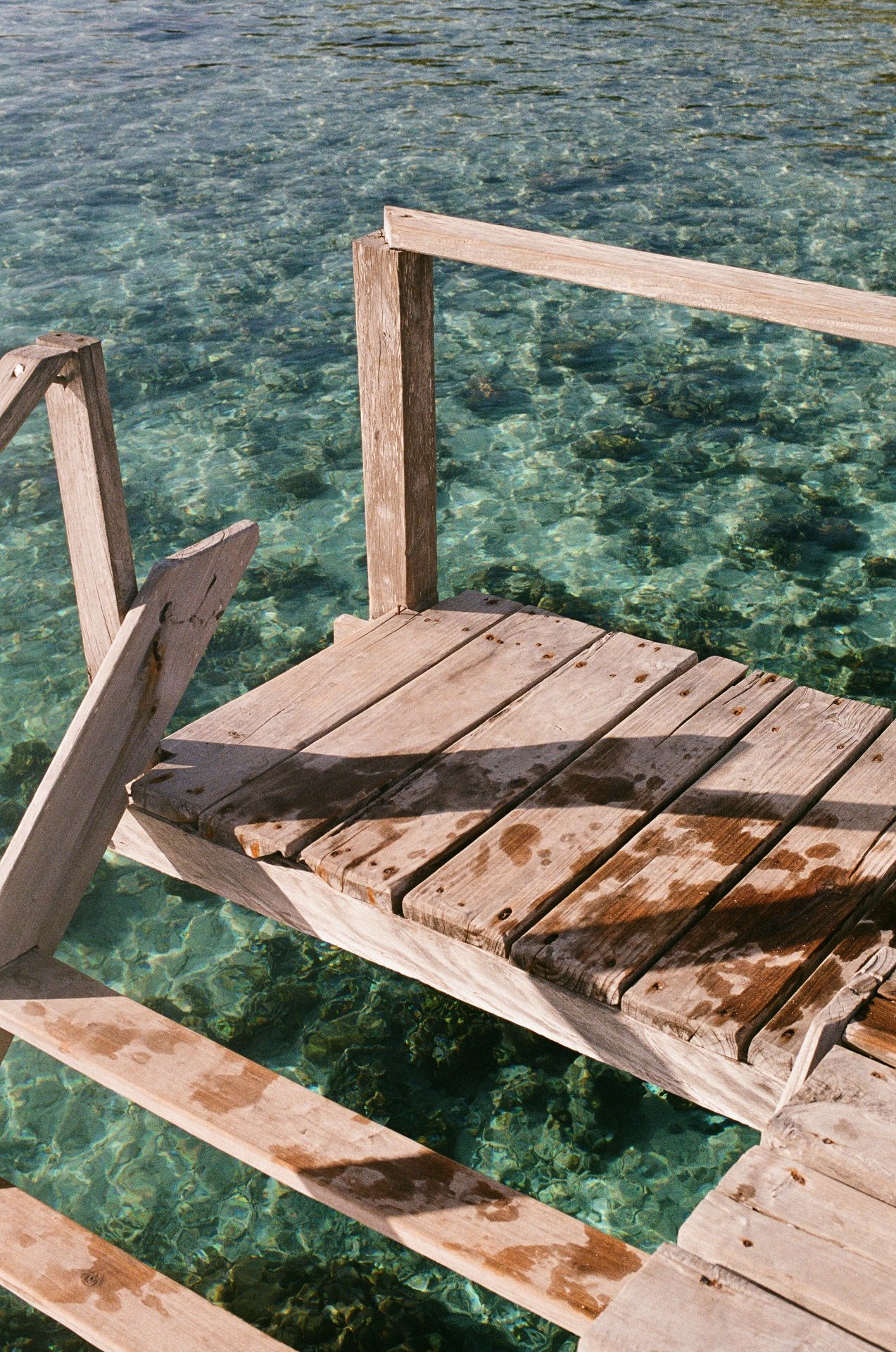“Never had so many humans been so happy to see a lethal killing machine striding confidently towards them. All hell threatened to break loose as everyone excitedly hushed and rushed to form up behind our guides and track the dragon through the jungle”
I’ll be honest. If you laid out this trip for me a few weeks prior, I would probably turn it down. The idea of an overly-priced flight (two, actually), travelling during Eid (notoriously the very worst possible time to travel in Indonesia), for just a short, one-day whistle-stop tour of one of the country’s most popular tourist destinations? Hrm. It’s not my cup of tea on paper. No thanks.
On arrival, it appeared as though my fears may be confirmed. As we walk down the main road of Labuan Bajo in Flores, what was once a dusty, unassuming road with a couple of ramshackle buildings moonlighting as tourist information offices is now a raucous high street bustling with international cuisine, large floor-to-ceiling windows through which you can spot fancy, expensive, painfully hipster coffee machines and artisan bakeries with clever names like “Komodough”.
I was here in 2017 just six short years ago but it’s now unrecognisable, to the point where I kept shaking my head in disbelief with a creeping sense of doubt that began to wonder if I’m actually in the same town. Is this what it feels like to be old?
Big money has clearly arrived here. As one of Jokowi’s “five new Bali’s”, Labuan Bajo – the gateway to the world-famous Komodo National Park – has seen a ludicrous injection of cash and with it plenty of fast, furious and sometimes unchecked development that may yet see Komodo National Park become a Disney-esque Jurassic National Park. In short, they’d like more international tourists to visit here. As me and my dad stroll around munching on overpriced artisan ice cream, the plan is clearly working.
Living in Lombok, the island itself a subject of the Indonesian government’s grand “five Bali’s” vision with the Mandalika race track, I have a strange fear about where these projects lead – what they stand for, and what they bring with their very specific type of “development”. But I’m doing my best to keep a lid on all of that right now.
It’s my dad’s 60th birthday and to celebrate the milestone, he’s flown halfway across the globe to visit me in Lombok, Indonesia. It’s his first time anywhere in Asia and once the idea of going to see the Komodo Dragons took hold, there was no turning back.
We started bright and early at 6am the next morning. After a fair bit of deliberating, thanks to the fact my dad’s birthday just so happened to fall exactly on Eid and all that entails, I’d booked with a company called East Cruise. With solid reviews on Google and Trip Advisor and a reasonable price, it was the best pick from a wide array of many, many choices.
Communication via WhatsApp was easy and right on time, they picked us up outside our hotel with a couple of other customers and drove us the short distance down to the port where we boarded our boat along with a growing horde of tourists.
While there were certainly cheaper day trips available, I’d been swayed by several reviews that pointed out how if you take a smaller, local boat, the engine might be insufficient, meaning it takes an age to sail anywhere and you end up missing half your itinerary. You really do get what you pay for in this case.
Our boat – relatively big and shiny in comparison – came with equally big and shiny engines. Within minutes we were shooting out of harbour toward the National Park, literally flying past other boats. I fired up the Canon A1, loaded with a roll of Kodak Gold 200, which I figured would be an excellent choice for this beautiful sunny day with lush blues and greens everywhere you look.
Flying into the Komodo National Park
Land ahoy!
In hindsight, if your goal was to beat the crowds, the speed of the boat didn’t matter so much. There’s no avoiding it. Our first destination was Padar Island and, fully aware that I was part of the problem here, we set about climbing the 800 steps up to the iconic lookout point. Padar Island is the most well-known island within Komodo National Park which is weird when you consider that 2km away there’s literally a giant island called Komodo with real, wild Komodo dragons on it.
Hot and sweaty, as we clambered up the steps, moving as one great pilgrimage, I mused on this bizarre, modern phenomenon. Padar Island is a victim of the Instagramification of the world. There’s enough damn photos of this place to feed into some AI supercomputer and reproduce a 100% accurate 3D render. Every conceivable angle – every blade of grass – has been captured in the last decade and uploaded to social media ten times over. A small part of me perhaps revels in the challenge of visiting such a tourist trap, to see if I can conjure up an image that’s unique and different. But mostly, I hate it.
Padar Island is indisputably, gloriously beautiful. My dad, seeing it for the first time, was floored by the views at the top. The lush green hills flowing down into brilliant blue, tropical waters are popular for good reason. Winding my film forward steadily, I snapped a couple of great photos of him and I, then set about trying to find something new and different. Unsurprisingly, I didn’t.
I really like this particular photo of my dad. That’s what this whole day was about - making great memories!
A generic shot, but effortlessly beautiful nonetheless
Shots like these confirm that Kodak Gold 200 was the right choice
I also snapped one or two selfies on my phone, just incase all the film photos turned out to be garbage, or didn’t actually work
On the way back down there were perhaps one or two compositions that I particularly liked and some of the photos turned out great. Even with all the crowds and boats, it’s a stunning place. But you cannot escape the crowds. It’s funny, really. There are 29 islands within Komodo National Park and I suspect there are some truly mesmerising places that nobody really goes to or has ever photographed. Everybody wants to come here and the tour companies are all too happy to oblige.
It’s not quite the infamous Everest Hilary Step photo, but it’s not far off
As we boarded back on the boat, I likened it to a must-do rollercoaster within a larger amusement park. You queue for ages and you watch the ride go round and round for hours (in this case, you’ve most likely seen a thousand images of Padar Island on Instagram already) to the point where you know what you’re getting. Then you ride it for two minutes, have a pretty good time, get off and move on to the next thing.
And this is all by design. The Bali boom of the past 20 years has seen record numbers of visitors flock to the island (some of whom don’t ever realise Bali is just one small part of a much larger nation) and with that, some massive financial incentives to spread and replicate the model. The Indonesian government has determined that, like it or not, other locations around the world’s largest archipelago should follow suit. We want more. More visitors. More money. More everything.
To be honest, having personally seen the impacts of the pandemic on the local Lombok economy when so much revenue from international tourists suddenly dried up, it can be a hard thing to throttle that or hold back when the going’s so good. When the sun shines, make hay.
That’s where we’re at with the Komodo National Park. There are thousands of visitors traipsing all over this small island as our boat chugs away. There will be thousands more tomorrow. And the day after that. And the next one, too. This is big business that, left unchecked and improperly regulated, could well prove problematic. Should you make hay while the sun’s shining if it’s detrimental in the long run?
In Bali, the negative impacts of overtourism are all too clear and common. Misbehaving, disrespectful R̶u̶s̶s̶i̶a̶n̶s̶ tourists getting naked at sacred sites, perplexingly angry, shirtless men raging at local police for being pulled over because they weren’t wearing a helmet, awful traffic brought to a standstill on roads and infrastructure that was clearly never designed to carry such a heavy load. For some, Bali is a success story that must be replicated but for me, it’s a warning – something that should really be avoided at all costs.
It can be a vicious loop. “The more tourists there are, the more they end up destroying the very assets – monuments, beaches, national parks – upon which tourism depends” writes Pallavi Aiyar on the Global Jigsaw Substack
We head next to Komodo Island for the main event of the day – the chance to see a real Komodo Dragon in the wild. My dad fell into the habit of referring to them as dinosaurs and he’s not wrong. They’re something of an ancient relic from a bygone world – perhaps the oldest, most authentic thing left to be found in the park. On reflection, this description also fits my dad as he turns 60 years old.
After a quick introductory talk from our guide, in which we learn that these things can run at a surprisingly fast 25km/h, we’re trudging through the rainforest in search of the dragons. There’s at least 30 of us, walking single file along narrow tracks like a delicious, slow-moving buffet. Komodo Dragons, even if they don’t instantly rip you to shreds or devour you whole, have a lethal bite. The bacteria within their saliva guarantees death within a matter of days. I nervously glance at our guides carrying nothing but long sticks.
Suddenly, as we were waiting for our guide to check something out up ahead (he was so far away I hadn’t been able to hear any of the information he’d been sharing), everything seemed to darken momentarily. Under the thick jungle canopy I wonder if it’s a cloud up above but I’m mostly concerned that it’s my own eyes “going a bit weird”, so I don’t mention it to my dad or anyone else. It’s only after that I discovered there had been a rare hybrid solar eclipse in the middle of the day!
Having missed this once-in-a-lifetime solar eclipse, we stared at some Komodo Dragon poo and became restless. We’d been on the island a good 40 minutes and seen no dragons. “Why were they not appearing?” I wondered, as some Americans broke out into obnoxiously loud chatter, as if they were at some sort of anti-wildlife networking event. Our group had doubled in size as we merged with another boat-load of people, all milling around a very dry watering hole. I could see the guides were beginning to worry and so was I.
It would just be sod’s law that my dad, having flown all this way for a once-in-a-lifetime experience, wasn’t going to see a Komodo Dragon. The best he was getting was a splat of white Komodo poo on the ground. Shit. Literally.
Now you too know what Komodo shit looks like
But then, out of the dense foliage a huge Komodo Dragon strode. Never had so many humans been so happy to see a lethal killing machine striding confidently towards them. All hell threatened to break loose as everyone excitedly hushed and rushed to form up behind our guides and track the dragon through the jungle. Everyone, including myself, held up phones and cameras above their heads, as if stood at a concert filming every second of the performance.
After a few minutes, the dragon made its escape, no doubt relieved to be left alone to get on with whatever it is that Komodo Dragons do on the day-to-day. In all the excitement, I hadn’t actually managed to capture any photos of it on my camera but it hardly mattered. My dad was buzzing and so was I. Mission accomplished! Even the tour guides were grinning, wiping relieved beads of sweat from their brow. The reviews on Google and Trip Advisor would remain positive.
Fortunately, as we made our way back to the boat, things got even better as we encountered two more dragons. This time, adrenaline pumping through my veins, I got a few shots off with the camera. I don’t think any of them are particularly good, but it was a fun little moment regardless.
In the original photo, I wasn’t a great fan of how the Komodo Dragon got lost in the frame. I like this cropped version a lot more
The best of an average bunch. I like the leaves in the foreground here, which added some depth. In hindsight, I wish I’d had more time and composure shooting with these two dragons
By far and away the best photo of the day was the one snapped by a guide on my phone. I hadn’t expected much but clearly, this was a man who’d taken one or two photos before. The composition and angle were spot on, to the point where I encouraged him to consider photography as an alternative profession to tourism. He absolutely nailed it and my dad was so chuffed he had it printed and framed as soon as he got back home.
The winner by some margin - a photo snapped on my phone by a relative stranger
With the dragons ticked off our generic checklist, we could pretty much put our feet up for the rest of the day. After a tasty lunch (provided as part of the tour), we made our way over to Manta Point and dropped in for some snorkelling where, believe it or not, we did indeed find manta rays. Four of them. And they were absolutely huge.
At this point – the only point in the day where I actually needed my GoPro – my GoPro seized up and failed. This is a reminder to myself as I write this that I need to consider alternative, more reliable action cameras. Anyway, fortunately I did have my other camera with me – a Sony RX100 V with underwater housing. Despite a rubber ring also breaking on this so that I couldn’t change the settings (seriously, what are the chances), I somehow managed to come away with some really beautiful photos. They’re a complete fluke, but I love them.
Nailed it
I’d argue that seeing these manta rays over the Komodo Dragons is what drove home the point of how special this National Park is
The rest of the afternoon followed suit. We dropped in on another coral reef to snorkel and I drifted along on a very casual current, gliding over some unbelievably gorgeous, pristine coral reef, snapping away to my heart’s content.
The health of the reef out here is a delight to see
Drifting on a very casual current, I was blessed with perfect light and visibility
If you’re wondering what type of fish these are, you’ve come to the wrong place. No idea. Pretty, though
Like something from a David Attenborough documentary
Making new friends
There was the unfortunate moment where I caught sight of another tourist trampling across that unbelievably gorgeous, pristine coral reef. I watched in dismay as broken branches went flying off in all directions, before surfacing to bollock him. It was quite out of character for me but I was fuming, berating the guy angrily “just float on the surface! Fucking swim! STOP WALKING ON THE CORAL”. He quickly got the message. When you see the negative impacts of tourism manifesting before your very eyes like that, it’s a sobering thing.
Our last stop of the day was spent lazing around on the small but pretty island of Kanawa, before sauntering back to port. All in all, the trip had been brilliant. My dad absolutely loved every second of it, confirming that it was, as me and my sisters had hoped, a great 60th birthday present.
Kanawa Island
These dilapidated little holiday shacks made for a nice composition
All beers and smiles at the end of the day
A magazine front cover?
I found myself unsure of where I sat with the whole concept. I suppose touristy day trips like this where you visit all the highlights are subjective. My dad had a blast and because of that, so did I. So it certainly matters who you travel with. It’s a lovely experience to travel with your parents, if you can, and I hope to do more of it in the future. With the limited time constraint of dad’s holiday (which most other people have too), this was the best bang for our buck and we’d made the most of it.
I realised that my dad also enjoyed it because he doesn’t have Instagram or social media. He hadn’t yet seen it – it was all new and fascinating to him. This was quite an interesting little data point for me and confirms a theory I’ve developed for my own travels. Sometimes, I purposefully try to avoid looking at YouTube videos or social media content covering the place I’m about to visit. It’s better that way because I don’t know exactly what it’s going to be like and as a result, I still get the buzz and excitement of experiencing a completely new place and culture for the first time.
Going back to the top of this piece, I wrote how usually, this wouldn’t be my cup of tea and that remains the case. Personally, I’d always opt to spend longer in places – I like to get off the beaten track and get to know countries and places on a deeper level. If I could have, I would’ve spent at least a week in Labuan Bajo, diving in the National Park and squeezing as much out of it as possible. I’d also consider making my way there overland, rather than flying.
But I appreciate that this way of travel isn’t always possible. In fact, it’s idealistic. Most people, like my dad, can only get a few weeks off work and want to pack as much in as they can. So we are where we are and honestly, I don’t know how it changes.
I look at the wear and tear Lombok’s famous three Gilis are showcasing after twenty to thirty years of sustained pressure from travellers and I wonder whether the Komodo National Park ultimately faces a similar fate.
If, like myself, you are interested in travelling more sustainably and finding out how you can leave less of a footprint, then I highly recommend reading and subscribing to Stuart McDonald’s brilliant Couchfish. He recently wrote up an excellent report about sustainable travel in Vietnam and there’s an interview on World Nomad’s with some great insight, too.
Sunset in Labuan Bajo and the end of my roll



